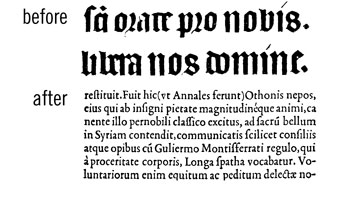Imagine picking up an object and suddenly experiencing a flood of voices filling your mind, not from a physical location near you but from anyone, anywhere– perhaps even from people who lived hundreds or thousands of years before you were born.
Now imagine that the object you’ve picked up is a book.
The ability to read to oneself is a remarkable gift. How strange to think that these little black and white scratches on white paper could carry so much power, delivering the voices in your head.
In terms of the evolution of writing, design, and typography, the ability to read silently came about suddenly and changed everything. In the Western tradition, writing was previously designed to be read out loud as part of a religious ceremony. Books were rare and incredibly valuable. With the invention of the printing press, books became much more common and inexpensive, and could be privately consumed at a tremendously faster pace.
The human eye entered into these ancient conversations with a hurricane-like force, transforming them profoundly and permanently. Older letterforms were strongly vertical, resembling spires and steeples. They slowed the eye with their lack of contrast between letterforms and repeated verticals. These forms were suitable for reading out loud, but were a great hindrance to those reading silently.
The Roman forms that replaced them had much more contrast between the different letters. The eye could build these forms into distinct shapes without having to decipher each letter. The vertical emphasis was replaced with a slant roughly corresponding to a right handed person holding a pen.
Almost overnight, a visual language based on the structures of authority became replaced with a visual language based on the needs of the audience and the physical interaction between a human body and a piece of paper. This was the birth of humanist letterforms, which are still most easily read fonts in use today.

In many ways, the progression continues today as our communications continue to cater to their audience. Communicators who understand and act on audience preferences will have a distinct advantage over those who don’t.